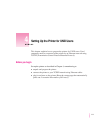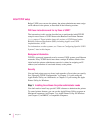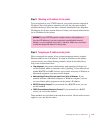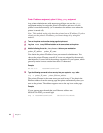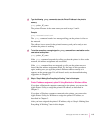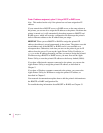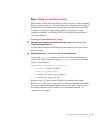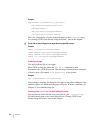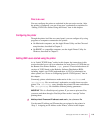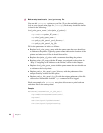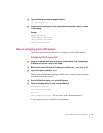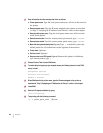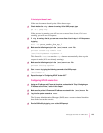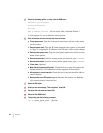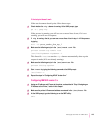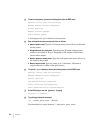
What to do next
You may configure the printer as explained in the next major section. After
the printer is configured, you can set up users’ workstations as explained in
“Getting UNIX Users Started Using the Printer,” later in this chapter.
Configuring the printer
Though the printer itself has no control panel, you can configure it by using
programs on computers connected to the printer:
m On Macintosh computers, use the Apple Printer Utility and the Chooser’s
setup function, described in Chapter 2.
m On IBM PC or compatible computers, use the Apple Printer Utility for
Windows, described in Chapter 3.
Getting UNIX users started using the printer
As in “Initial TCP/IP Setup,” earlier in this chapter, the instructions in this
section describe how to set up workstations for most flavors of UNIX that use
the Remote Line Printer Daemon
(lpd) protocol. These include almost all
versions of UNIX based on the Berkeley Software Distribution (BSD),
including Apple’s own UNIX implementation, A/UX. For information on
other systems, see “Notes on Configuring Specific UNIX Systems,” later in
this chapter.
Commonly, printer administrators make entries in the
/etc/hosts and
/etc/printcap files on each user’s workstation to enable them to use the
printer: The
/etc/hosts entry identifies the printer’s IP name and address.
The
/etc/printcap file identifies different printing parameters.
IMPORTANT
This is a PostScript-only printer. If you want to print text files,
you must send them through a PostScript filter such as “enscript” before
printing them.
1Add the printer’s IP name and IP address to each user’s
/etc/hosts
file.
Use the same IP address and IP name that you assigned to the printer in
“Step 3: Assigning an IP Address to the Printer,” earlier in this chapter.
119
Setting Up the Printer for UNIX Users



